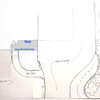Landscape Bhutan
shaxhome (Frog Rock, Australia 9b)
12 years ago
I recently posted on a spam thread here, only because it mentioned Bhutan, where I'm currently living and working. I've linked to that thread at the bottom of this one.
But perhaps some people might be interested in this project, or just have a fascination with the local culture, as I certainly did and still do.
Anyway, I'll use this as a type of blog of our site progress, and if anyone wants information or has questions, I'm happy to oblige. I'm also open to suggestions!
This really is one of the world's last untouched regions, and I'm lucky and privileged to have the opportunity to be here.
Regards to all,
Shax
December 2010...(That Buddha statue on the horizon sits atop a shopping mall. Big!)
November 2011...
The Water Feature Takes Shape...
The Steps From Top Carpark to Main Building...(Through the Security Rooms)
Here is a link that might be useful: Other Thread





inkognito
carol6ma_7ari
Related Professionals
Maple Valley Landscape Architects & Landscape Designers · Harrison Landscape Architects & Landscape Designers · Owings Mills Landscape Architects & Landscape Designers · Sahuarita Landscape Architects & Landscape Designers · Aurora Landscape Contractors · Amesbury Landscape Contractors · Burlington Landscape Contractors · College Park Landscape Contractors · Elmhurst Landscape Contractors · Laguna Hills Landscape Contractors · Oviedo Landscape Contractors · South Lake Tahoe Landscape Contractors · Chicago Ridge Landscape Contractors · Athens Decks, Patios & Outdoor Enclosures · Norco Stone, Pavers & Concreteshaxhome (Frog Rock, Australia 9b)Original Author
catkim
deviant-deziner
Cher
carol6ma_7ari
woodyoak zone 5 southern Ont., Canada
scrapbookheaven
shaxhome (Frog Rock, Australia 9b)Original Author
shaxhome (Frog Rock, Australia 9b)Original Author
jakkom
woodyoak zone 5 southern Ont., Canada
shaxhome (Frog Rock, Australia 9b)Original Author
shaxhome (Frog Rock, Australia 9b)Original Author
tibs
nandina
shaxhome (Frog Rock, Australia 9b)Original Author
woodyoak zone 5 southern Ont., Canada
shaxhome (Frog Rock, Australia 9b)Original Author
woodyoak zone 5 southern Ont., Canada
lazy_gardens
shaxhome (Frog Rock, Australia 9b)Original Author
shaxhome (Frog Rock, Australia 9b)Original Author
inkognito
woodyoak zone 5 southern Ont., Canada
shaxhome (Frog Rock, Australia 9b)Original Author